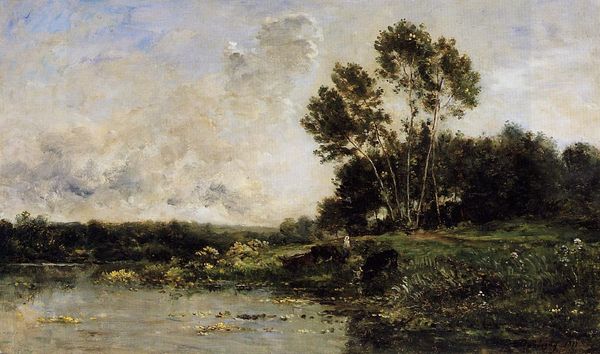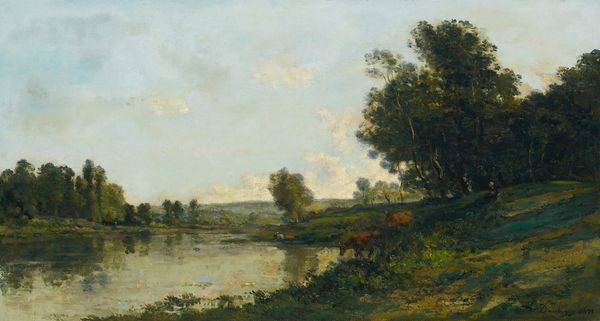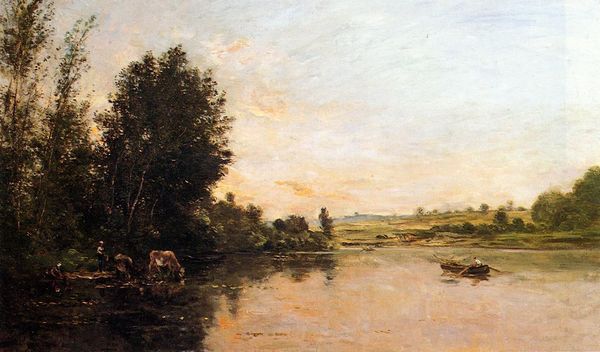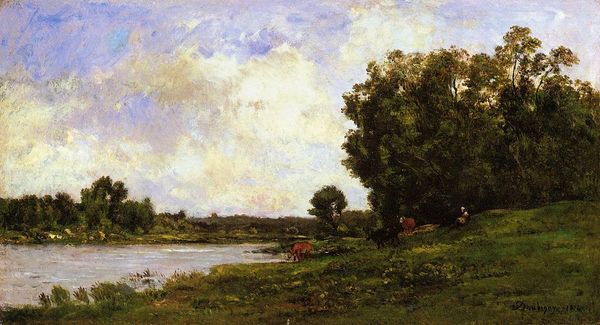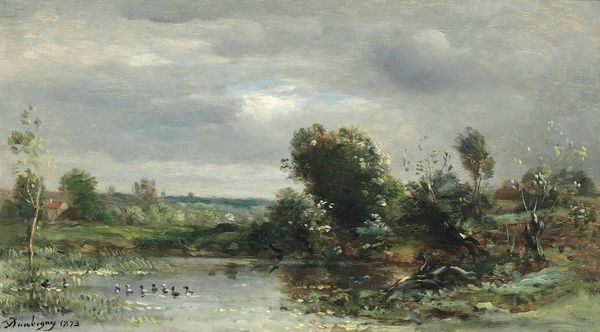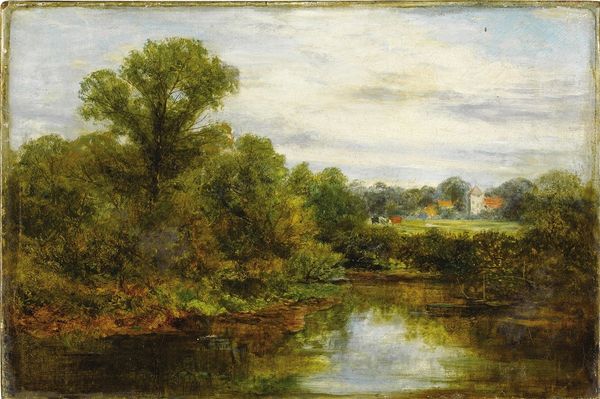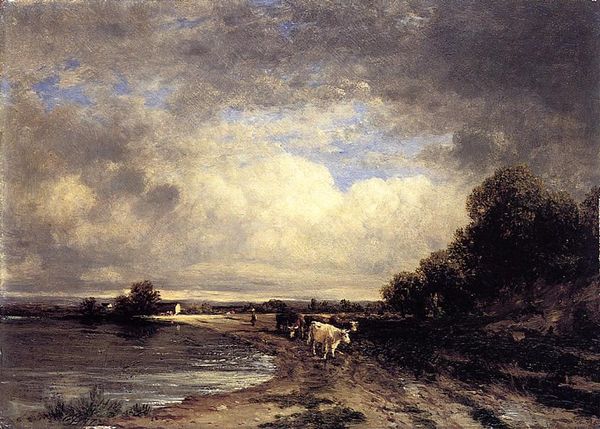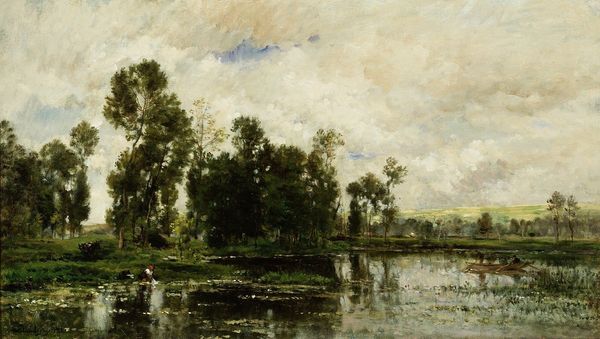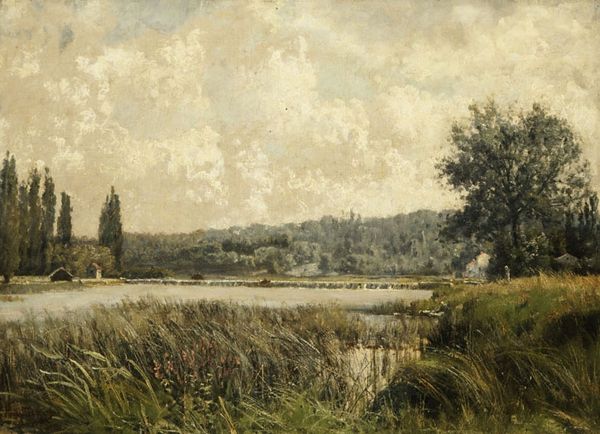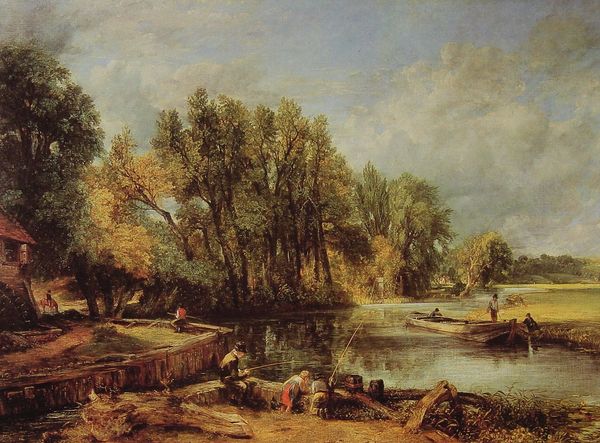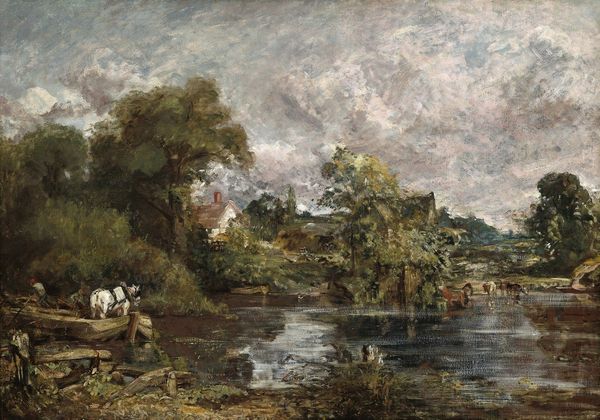
Copyright: Public domain
Curator: Pierre Emmanuel Damoye painted this “Autumn Landscape” in 1898. Notice the visible brushstrokes and the way he captures the light. It exemplifies plein-air painting with a dash of romanticism, don't you think? Editor: There’s definitely a tranquility to it, a muted palette, mostly browns and greens, reflects a somber feeling. There is some underlying commentary about nature perhaps. Curator: Indeed. But consider the rise of landscape painting in late 19th-century France. Artists like Damoye turned their attention to capturing the transient effects of light and atmosphere outdoors, a distinct shift away from purely historical or mythological themes that the French Salon would promote at the time. Editor: Right, and there’s an element of portraying this change, as it reflects the transition of society through a period of social unease that mirrors the environment through elements of decline and acceptance in its natural transition from season to season. How does this artistic shift affect the viewer? What feelings were those visiting salons exposed to? Curator: Precisely. By engaging with modern life through the act of "going into nature," landscape painting served a crucial function for art institutions, solidifying bourgeois concepts of nature, while obscuring the impact of the French upper classes. Art historians now see these landscape paintings, these slices of nature as active vehicles. Editor: As a whole, then, you see these paintings through the social history they capture and portray, how institutions shape society and shape movements that comment and create. To see the institution is to look through a lens of social progress. The light interacts within that paradigm to reflect on something greater. Curator: Yes, but from a theoretical lens, “Autumn Landscape” also prompts questions of representation. We are positioned as the observer in the foreground. Whose land are we observing and what position does the painting offer us, even force upon us, through a visual experience in painting form? Editor: To shift perspective and view this in a different light. So while I'm here observing the historical role and public imagery through institutions, you’re considering race, gender, power structures, even class identity. How the composition prompts discourse through these lenses is just as critical in appreciating art such as this. Curator: Exactly, looking at history through identity helps us reflect on contemporary social problems and struggles today. Editor: I hadn't thought of it in quite that way, it deepens my appreciation. Thanks for broadening my perspective on what Damoye achieved here.
Comments
No comments
Be the first to comment and join the conversation on the ultimate creative platform.
